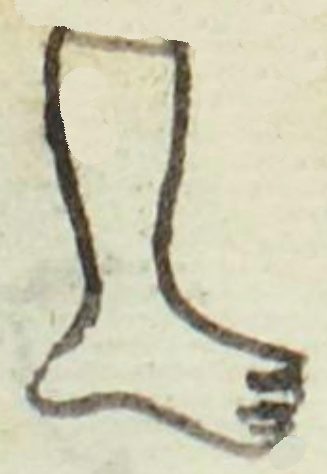choloa (MH633v)
This black-line drawing of the simplex glyph for the verb choloa (to flee or jump) is meant to indicate the taxpayers in the census who have fled to avoid paying their tributes. It is a human leg shown in profile, facing toward the viewer's right. In this example, the leg extends from the toes up to just below the knee. It has a semantic reading, utilizing a leg that conveys how people fled (on foot).
Stephanie Wood
Other glyphs for choloa will either show a human leg or the leg and paw of a deer. Sometimes footprints alone suffice to suggest someone has run away. The gloss that led us to choose the verb choloa for this glyph says "ocholloque," they ran away, referring to people who had left their communities in order to avoid paying the heavy tributes, which became rapidly more burdensome as people were dying from the waves of epidemics. Running away was an act of resistance to unreasonable colonial economic demands.
Stephanie Wood
ocholloq~
ocholloque (or ocholloqueh)
Stephanie Wood
1560
Jeff Haskett-Wood
run away, flee, huir, huidos, correr, saltar, escapar tributos

choloa, to flee, https://nahuatl.wired-humanities.org/content/choloa
huir
Stephanie Wood
Matrícula de Huexotzinco, folio 633v, World Digital Library, https://www.loc.gov/resource/gdcwdl.wdl_15282/?sp=349st=image.
This manuscript is hosted by the Library of Congress and the World Digital Library; used here with the Creative Commons, “Attribution-NonCommercial-ShareAlike 3.0 License” (CC-BY-NC-SAq 3.0).






